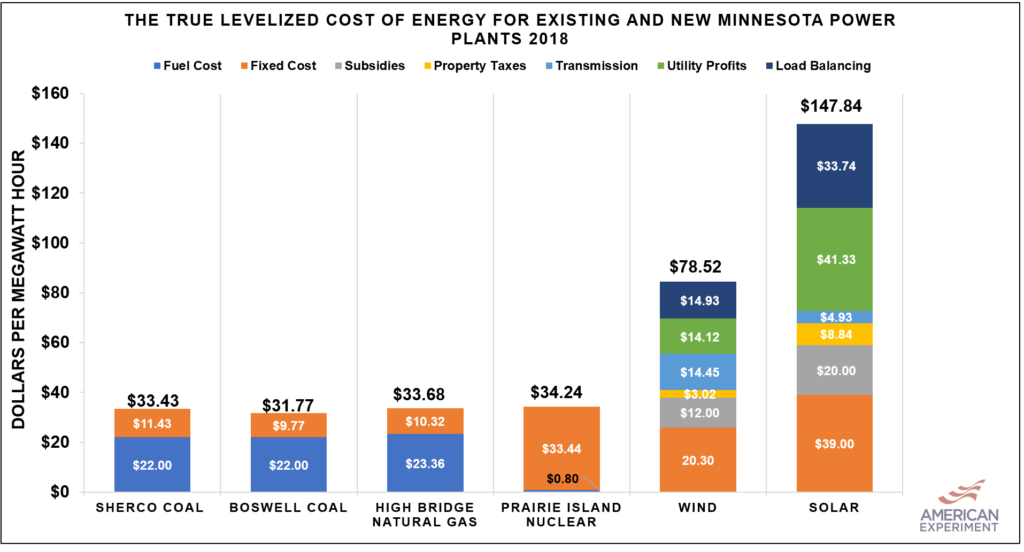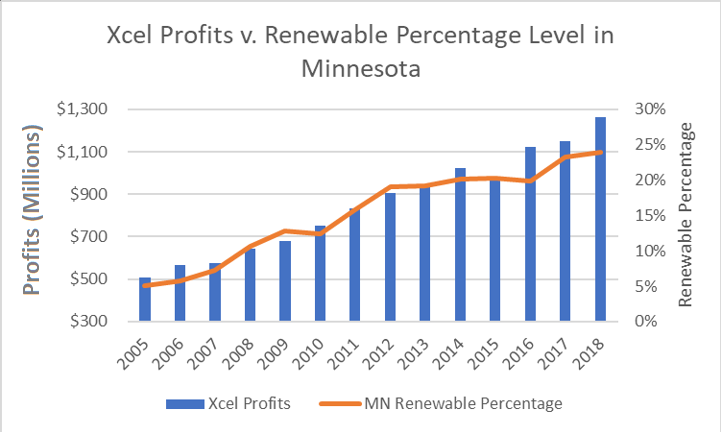Industrial Customers to Be Hit Hard By Xcel Energy Price Increases
Xcel Energy wants to raise the price of electricity again, but rather than spread the cost over all types of customers, such as residential, commercial, and industrial customers, the company is seeking to saddle Minnesota businesses with the majority of the costs, according to the Star Tribune.
Xcel has recently proposed increasing the cost of electricity by 20 percent over the next three years, but this plan has been panned by the Public Utilities Commission for increasing expenses for Minnesota families during the economic fallout of COVID-19. The PUC suggested that Xcel not raise the base rates on residential customers, but this course of action would lead to significant electricity surcharges for larger commercial customers.
In their initial proposal, Xcel wanted to charge an additional $171 million to about 48,000 larger commercial customers, not residents, but this figure was later revised to *only* $116 million for 2021.
According to the Star Tribune, industrial customers were livid with the arrangement, and they have every right to be. Despite using slightly more than a quarter of the electricity, they are being expected to shoulder most of the costs.
According to the Strib:
“Beyond that, the businesses argue that Xcel’s industrial electricity prices in Minnesota are already higher than the U.S. average. They said, too, that Xcel’s own costs fall when its sales fall, and that Xcel’s declining revenue is a long-term issue that must be addressed in a rate case.”
The large industrial users are right about one thing, and wrong about the other.
They are correct about industrial electricity prices in Minnesota being higher than the national average.
According to data from EIA, Minnesota’s industrial electricity prices were 16.5 below the national average in 2006, the year before Minnesota’s first renewable energy mandate was passed into law. In 2019, our industrial electricity prices were 12.66 percent above the national average, a swing of nearly 30 percent.

Burdening industrial customers with additional costs erodes their financial viability, especially when competing against companies in other states or nations with lower taxes, lower labor costs, and lower energy costs. While Minnesota has always been a high-tax state, our energy costs used to be far below the national average, giving our manufacturers a competitive advantage. But now, the cost of energy has become one more disadvantage.
Unfortunately, energy costs will continue to rise as Xcel Energy adds more renewable energy to the grid. This is where the industrials were incorrect to say that Xcel’s own costs fall when its sales fall.
As Xcel shuts down fuel-fired generators, like their coal plants, in favor of wind and solar, the costs that can be avoided by not burning fuel go down. In the meantime, wind and solar have high fixed costs that are incurred whether or not sales fall, which is shown in the graph below.

Fuel costs constituted about two-thirds of the cost of generating electricity at Minnesota coal and natural gas plants, according to 2018 data from the Federal Energy Regulatory Commission. The remaining third is composed of fixed costs, and these costs will have to be paid regardless of whether the plant is generating or not. In this case, reducing electricity demand can save $22 per megawatt hour by not burning coal.
But wind and solar have no fuel costs, which means that all of their expenses, including additional transmission and utility profit expenses, are “fixed” costs. This means the costs of wind and solar don’t go away if you reduce electricity demand. As a result, there are no possible savings to be had from reducing electricity consumption in a grid that is largely powered by wind and solar because Xcel Energy will be allowed to make a guaranteed profit on the construction of these power plants.

This means Xcel’s “Steel for Fuel” strategy makes it impossible for energy efficiency to save money for customers. This is the basis of “decoupling” revenues from sales. If Xcel Energy customers reduce their electricity demand, Xcel will simply charge more for the electricity that they do use! I’d encourage you to read this article for more information on this subject.
To their credit, PUC commissioners questioned whether Xcel’s costs significantly fall when electricity demand declines, according to the Strib. “These customers are not disconnecting from Xcel,” Scheurger said. “It seems Xcel’s fixed costs and other costs of service are still present.”
Fixed costs have been rising rapidly due to Xcel’s Steel for Fuel strategy. This means huge rate increases will become the norm as the company seeks to implement their own version of the Green New Deal. This is obviously bad news for energy intensive industries.
Eventually, rising electricity prices will make it virtually impossible for goods to be Made in Minnesota. However, you can help Center of the American Experiment push back against Xcel Energy’s plan to raise our electricity costs by signing our petition by clicking here.